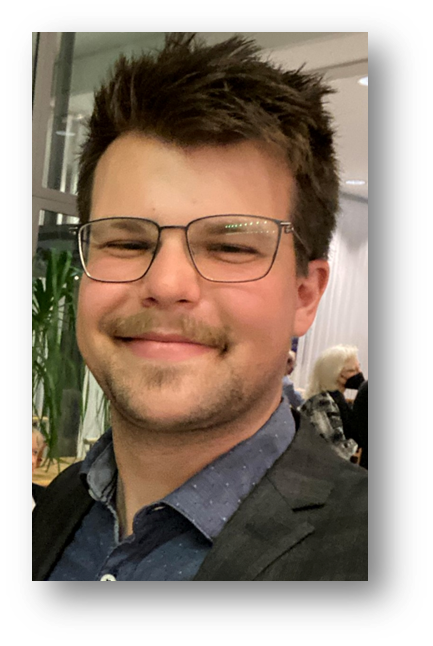 The Young Crystallographers have a new co-chair! Florian Meurer got elected with a unanimous vote at 31th Annual Meeting of the German Crystallographic Society. At the same conference he also got awarded the Lieselotte-Templeton Prize for his Master’s thesis, so more than enough reason to properly introduce him here.
The Young Crystallographers have a new co-chair! Florian Meurer got elected with a unanimous vote at 31th Annual Meeting of the German Crystallographic Society. At the same conference he also got awarded the Lieselotte-Templeton Prize for his Master’s thesis, so more than enough reason to properly introduce him here.
Florian started his chemical journey with CTA apprenticeship, which he completed in 2017, before turning to academia and studying chemistry in Regensburg. After he finished his master’s studies in spring 2022 he decided to stay there and continue his research in crystallography as a PhD student.
Florian, tell us shortly what your research is about.
My research concerns the application of basic crystallographic considerations to improve modern crystallography. During my bachelor’s thesis, I tested the use of Cu Kβ radiation for the use of specific metalorganic frameworks called “crystalline sponges”. Using a shorter wavelength than Cu Kα radiation, while still having more intensity than Mo radiation, benefitted the data and thus the structural models obtained from these compounds. [1] Another topic was the revision of anomalous dispersion parameters in small-molecule crystallography for my master’s thesis. I found these parameters to be reliably obtainable in the least-squares refinement to find optimal structural parameters. [2] At the moment, I am exploring the possibilities of quantum crystallographic methods for fundamental chemical questions.
What sparked your interest in crystallography already for your Bachelor’s thesis?
My passion for crystallography was ignited during my bachelor studies when I had the opportunity to already work on the research done by my predecessor on Cu Kβ radiation. The ability to “see” molecules at the atomic level and even beyond has always been fascinating to me. Also, the huge impact which the science of crystallography had and will have is a huge motivation to contribute to this historic, but very alive field of research.
Especially when I was offered a topic that involves fundamental aspects by testing different wavelengths for diffraction experiments in combination with the “crystalline sponge method” – a sophisticated method used in research and the pharmaceutical industry – I was really keen on working on this topic.
What motivated you to become the next Co-Chair?
In my position as Co-Chair, I want to help the Young Crystallographers to grow and to find new, active members. Even without knowing many Young Crystallographers before the joint meeting with the Young Crystal Growers in Freiberg, I felt very welcome in a diverse community that has many young researchers from a wide range of different research fields. I am convinced that this multi-faceted approach fits the pulse of the time and a strong exchange between the people doing the actual research in the laboratories benefits everyone involved.
References:
[1] Meurer, F., von Essen, C., Kühn, C., Puschmann, H., Bodensteiner, M., IUCrJ 2022, 9, 349–354. DOI:10.1107/S2052252522002147
[2] Meurer, F., Dolomanov, O. V., Hennig, C., Peyerimhoff, N., Kleemiss, F., Puschmann, H., Bodensteiner, M., IUCrJ 2022, 9, 604–609. DOI:10.1107/S2052252522006844